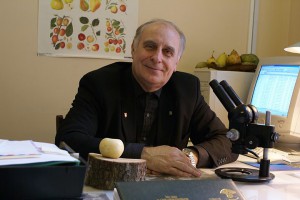- Buckwheat yields boosted by diversity in nearby forests.
- Date (press) with the past, in Qatar.
- Sustainable Intensification: Increasing Productivity in African Food and Agricultural Systems. A bit steep at GBP65 for 30 papers; we’ll be reading and sharing what we find.
- Apples, endangered? Well, yes.
- What’s so good about geographical indications anyway?
Nibbles: Lingonberries, Genebank Standards, Genebank, Seed Systems, Chinese drought, Cuba, Mexican bees
- Lingonberries power a trip from moose to mousse, and mush.
- FAO has a draft of updated genebank standards!
- Climate change person visits ICRISAT genebank, is impressed.
- Access to improved seed lauded.
- Yo! Price spike watchers! The Chinese drought thing is complex. Pay yer money. Take yer choice.
- Our friends at DAPA highlight their friends in Cuba: “peasant farmers have been able to boost food production via environmentally friendly methods”.
- Protecting native bee populations in Mexico.
Nibbles: Food prices, Wheat breeding, Potato Park, Mead, Peanut processing
- Is the World Producing Enough Food? The NY Times has the answer(s).
- Aussies trying to get to grips with salinity through breeding. Very cool, but maybe they should just stop growing wheat and think of some other crop?
- Potato Park potatoes to be parked in the Bóveda Global de Semillas de Svalbard.
- You know what those naughty Vikings used to say: “Let there be mirth, mead and fornication!”
- Adding value to peanuts in Bolivia. KIT video.
Egypt and agriculture
There are many things one could say about the changes in Egypt, and it seems that someone, somewhere, is saying each of them. Rather than add to the noise, I want to point to something rather good I saw at the Ancient Foods blog: a a hymn to the Ancient Egyptian Goddess of the Harvest Renenutet.
I will make the Nile swell for you,
without there being a year of lack and exhaustion in the whole land,
so the plants will flourish, bending under their fruit.
The land of Egypt is beginning to stir again,
the shores are shining wonderfully,
and wealth and well-being dwell with them,
as it had been before.
There’s just one thing that puzzles me about this rather fine invocation, and its name is Aswan. Has it been an overall benefit, now that the Nile no longer swells as once it did?
Pavlovsk mainstay passes away
 Leonid Burmistrov, Leading Scientist of the Fruit and Berry Crop Genetic Resources Department of the N.I. Vavilov Institute of Plant Industry (VIR) in St Petersburg, has died. From the recent announcement on the VIR website:
Leonid Burmistrov, Leading Scientist of the Fruit and Berry Crop Genetic Resources Department of the N.I. Vavilov Institute of Plant Industry (VIR) in St Petersburg, has died. From the recent announcement on the VIR website:
Leonid Burmistrov has made a significant contribution to the preservation of the threatened fruit and berry crop collections located at the Pavlovsk Experiment station of VIR. He gave 60 interviews to the Russian and foreign mass media. Thanks to his efforts, the collection continues to exist.